You’ve always dreamed of hitting the trails with an off-leash dog. You know your dog would love that freedom, but is she ready for it? A leash grants owners quite a bit of control, increasing both their dog’s safety and the safety of others. To ditch the leash responsibly, you need to hit some serious, targeted dog training milestones first. Read on to discover how to train your dog to walk off-leash.
Good On-Leash Behavior
It may seem counterintuitive at first glance, but you and your dog need to nail on-leash training before you even consider letting them go off-leash in uncontained areas. That means your dog should not exhibit any of the following undesirable behaviors on a leash:
- Pulling or tugging
- Playing with or biting the leash
- Reacting with aggression or too much excitement (e.g., barking or lunging) to stimuli like other dogs or people
Once you can walk your dog in a wide variety of environments and maintain a loose leash almost the entire time, you can consider her to have good on-leash behavior.
Excellent Recall
Any dog trainer will agree on one hard and fast rule: if your dog doesn’t have airtight recall, they shouldn’t be walking off-leash. What exactly is recall and how can you help your dog to perfect it?
Recall is the ability and willingness to come when called, no matter the circumstances. Pick one specific word or sound (most owners use their dog’s name) and reward your dog for responding to it by returning immediately to your side. Keep practicing this technique in increasingly distracting environments. For example, start in a low-distraction area like your living room. Then, graduate to the backyard. Then, work on recall in the backyard with a friend or family member present. Continue this pattern over the course of several weeks until your dog always comes when called.
Basic Command Mastery
Recall is the most important command your dog should know before going off the leash, but it isn’t the only command to work on. Other commands she should master include:
- Leave it
- Drop it
- Look or watch me
- Stay
- Lay down or sit (until given a release command)
These are all useful tools that can help you intervene as needed and protect your dog’s health and well-being. For example, if you notice her picking something up in her mouth, drop it will prevent her from swallowing something potentially toxic. Plus, working on a wide variety of commands helps to strengthen the communication and bond between you and your dog, teaching her that she should always default to you in any situation.
Minimal Reactivity to Common Distractions
Finally, it’s important that your dog is able to control her reactions to common distractions like people, bikes, squirrels, and other dogs. If she has a particularly high prey drive or simply can’t resist the urge to greet everyone personally, she may not be a good candidate for off-leash walking. Remember, even if her intentions are good, not all dogs (or people) want to be approached, especially by an off-leash dog.
Do you need help getting your dog a few steps closer to a life of off-leash fun? Find out more about ADU’s dog training programs today!


